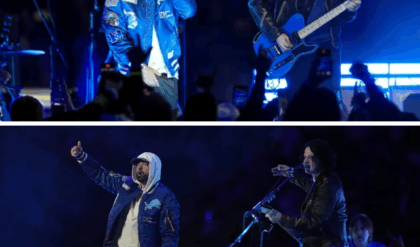The Lord of the Rings movies and Rings of Power feature songs and speech in Elvish — but there’s more to the story

On Nov. 29, 1931, J.R.R. Tolkien introduced the world to Middle-earth — the most important part of it, anyway. The Hobbit wouldn’t be published for six more years. The Lord of the Rings was still decades away. But on that autumn night, when the renowned philologist presented a paper titled “A Secret Vice,” he revealed his Elvish languages for the very first time.
Elvish is the heart of Tolkien’s mythology, and it’s all over the latest adaptation of his work, Prime Video’s The Rings of Power. Quenya, which Tolkien describes as a sort of “Elf Latin,” is mostly reserved for names, formal phrases, and poetry — Gil-galad’s song in the season 2 premiere, “Golden Leaves,” is a Quenya composition, for example. Sindarin, the Elves’ day-to-day language, is what Elrond and Galadriel speak when they argue about whether to use the Three Rings in the same episode, and what Celebrimbor’s protégé, Mirdania, lapses into when she discusses her troubling visions with Sauron.
And yet, as important as these languages are to Middle-earth, Tolkien never “finished” Quenya or Sindarin — and never intended to. As a result, Tolkien Elvish isn’t something you can learn to speak, at least not with anything approaching fluency. You can use Tolkien’s material to put together simple Elvish sentences and short verses, but in-depth conversations and longer compositions, like those found in The Rings of Power, require so much extrapolation, inference, and invention that it’s hard to consider the results Tolkien’s Elvish at all.
Tolkien didn’t want you to speak Elvish

J.R.R. Tolkien in 1955 Photo: Haywood Magee/Getty Images
While Quenya and Sindarin were “constructed deliberately to be personal, and give private satisfaction,” they didn’t stay private. The first two books of The Lord of the Rings hit shelves in 1954, and readers almost immediately began deciphering the Elvish inside. Eventually, they tried to figure out how to speak and write it, too. The first book purportedly teaching Elvish appeared in 1974; others followed. These days, you can find Quenya and Sindarin in movies, TV shows, video games, tabletop RPGs, how-to books, and more — none of which were written by Tolkien.
In “A Secret Vice,” Tolkien confesses that he’s been constructing “imaginary languages in full or outline for amusement” since he was a teenager. He shares four early Elvish poems, and explains how constructed languages are intimately connected to mythology. Real languages develop over time, Tolkien argues, so invented ones need a fictional history to maintain an “individual flavor” and the “illusion of coherence and unity.” That’s why Tolkien first created Middle-earth: His languages needed a home.
However, the most striking part of “A Secret Vice” isn’t the early preview of Tolkien’s legendarium. It’s what the paper reveals about his motivations for creating languages in the first place. As Tolkien wrote in a letter he composed for a fan in 1967, “this process of invention was/is a private enterprise undertaken to give pleasure to myself by giving expression to my personal linguistic ‘aesthetic’ or taste and its fluctuations.” He wasn’t trying to design a new form of communication. If anything, Tolkien was experimenting with the artistic possibilities of a language that wasn’t communicative. Other speakers would only have gotten in the way.
J.R.R. Tolkien’s two Elvish languages

Image: Amazon Video
In Tolkien’s mythology, there are roughly 11 Elvish languages, all of which descended from a common ancestor. However, he only developed two in real depth. Quenya came first; Tolkien began working on his high-Elven tongue in 1915. Sindarin has a more complicated lineage. In 1917, Tolkien began developing Gnomish, or Goldogrin, a language with a clear Welsh influence. The author reconceived Gnomish as Noldorin in the ’20s and ’30s, keeping its Celtic flavor but drastically changing its structure; the language kept that name until Tolkien was deep into writing The Lord of the Rings, when he renamed it Sindarin and gave it a new fictional history.
Notably, neither language was complete when Tolkien began documenting the Elves’ fictional history. In fact, evidence suggests that Elvish and Middle-earth grew up together. Tolkien wrote the first poem featuring a Middle-earth character in 1914, a year before Quenya (then known as Qenya) hit the scene. The earliest-known Quenyan document is already full of familiar names.
As with his fiction, Tolkien revised and refined Quenya and Sindarin up until he died in the early ’70s. He changed his mind often and left behind a mess of notes for scholars to untangle. In the article “Elvish as She Is Spoke,” Tolkien scholar and The Rings of Power language consultant Carl F. Hostetter observes that Tolkien rarely finished the descriptive grammars he started. When he did, they were covered in amendments and corrections, almost demanding new drafts.
Almost every original Elvish composition Tolkien penned introduced new ideas to the mix or changed existing rules. His explanations for the linguistic origins of many words, including names like Aragorn and Galadriel, shifted regularly.
As a result, there’s no stable version of Quenya or Sindarin to learn, speak, or translate. There are multiple iterations of both, but they’re all incomplete, not to mention scattered across multiple documents, many still not publicly released. You can do what scholars like Hostetter do, and track the languages’ evolutions over time, but there’s no fixed, final edition of either to study.
What Elvish meant to J.R.R. Tolkien

Photo: Ben Rothstein/Prime Video
But again, Tolkien wasn’t out to create a practical real-world language. “A Secret Vice” makes it clear that he considered his languages works of art, and used them to express his personal notions of beauty. Tolkien liked languages that sound good even when divorced from meaning — he expressed a fondness for Finnish and Welsh for that reason — but he was even more motivated by an “ingenuity in the relations of symbol and sense.” In other words, he liked strong connections between a word’s sounds and its meaning, a concept known in linguistics as “sound symbolism.”
Given the haphazard state of the information Tolkien left behind, there are an infinite number of ways to create Elvish dialogue. For the feature-film adaptations of The Hobbit and The Lord of the Rings, A Gateway to Sindarin author David Salo opted for a history-oriented approach focused on preserving consistency with the Elvish in novels. “I tried to do something that would be accessible to fans of Tolkien’s languages,” he told me in an interview for this piece. “If they were looking at something I had written, they would be able to say, ‘Oh, that looks familiar.’”
First, Salo established Sindarin as it appears in The Lord of the Rings as his baseline. When possible, he tried to use that. When he found gaps, however, he went back to earlier iterations of the language, then rebuilt what he needed by layering on Sindarin’s subsequent transformations. The final product, ideally, feels contemporary with The Lord of the Rings, even though it isn’t straight from Tolkien himself.
This method required a fair amount of inference and extrapolation, in addition to some outright creation. Some of Tolkien’s ideas were inevitably discarded along the way. Further, the output is unavoidably informed by Salo’s own tastes and opinions. Other people would probably make different decisions and end up with different, equally valid results.
Who owns Tolkien’s Elvish?

Photo: Ben Rothstein/Prime Video
Can we really call the versions of Quenya and Sindarin that appear in Peter Jackson’s Lord of the Rings movies and The Rings of Power to be Tolkien’s languages? Strictly speaking, no — not if the point of Tolkien’s Elvish is to express his personal aesthetic tastes. There’s only one person privy to that information, and he died in 1973.
But Elvish doesn’t belong to Tolkien anymore, really. It belongs to everyone who reads The Lord of the Rings and is dazzled by its linguistic possibilities. A communal cultural object may be the opposite of what Tolkien was trying to create, but that’s what he ended up with — and like any other shared language, Quenya and Sindarin are evolving over time.
Ultimately, Salo thinks Tolkien would be flattered that his “secret vice” has excited others’ imaginations. “I think he would be critical in various ways, but I don’t think he would be offended,” Salo said. “He would also realize that, in the process of becoming separated both from his own thought and the fictional world he created, [Elvish] was becoming its own thing. It was becoming something different from what it had been when it left his pen.”





